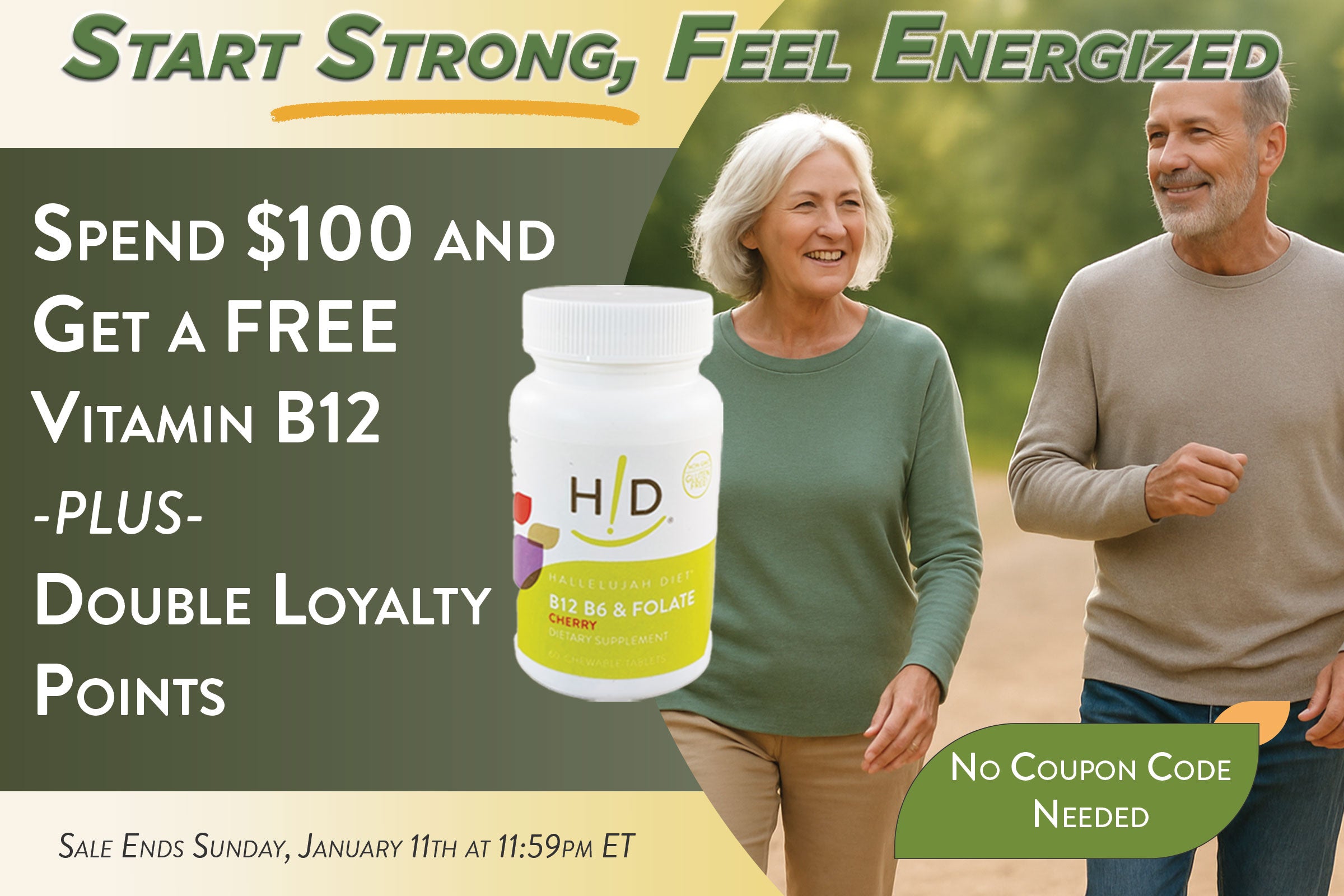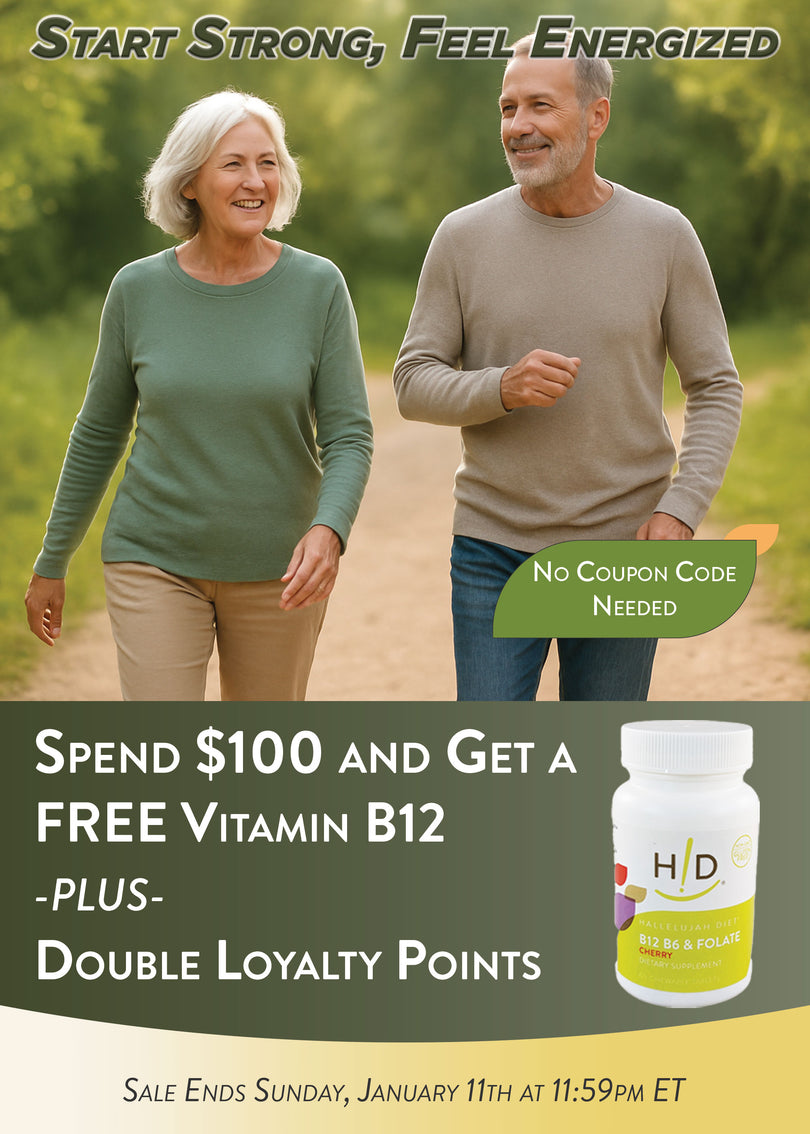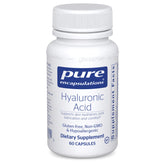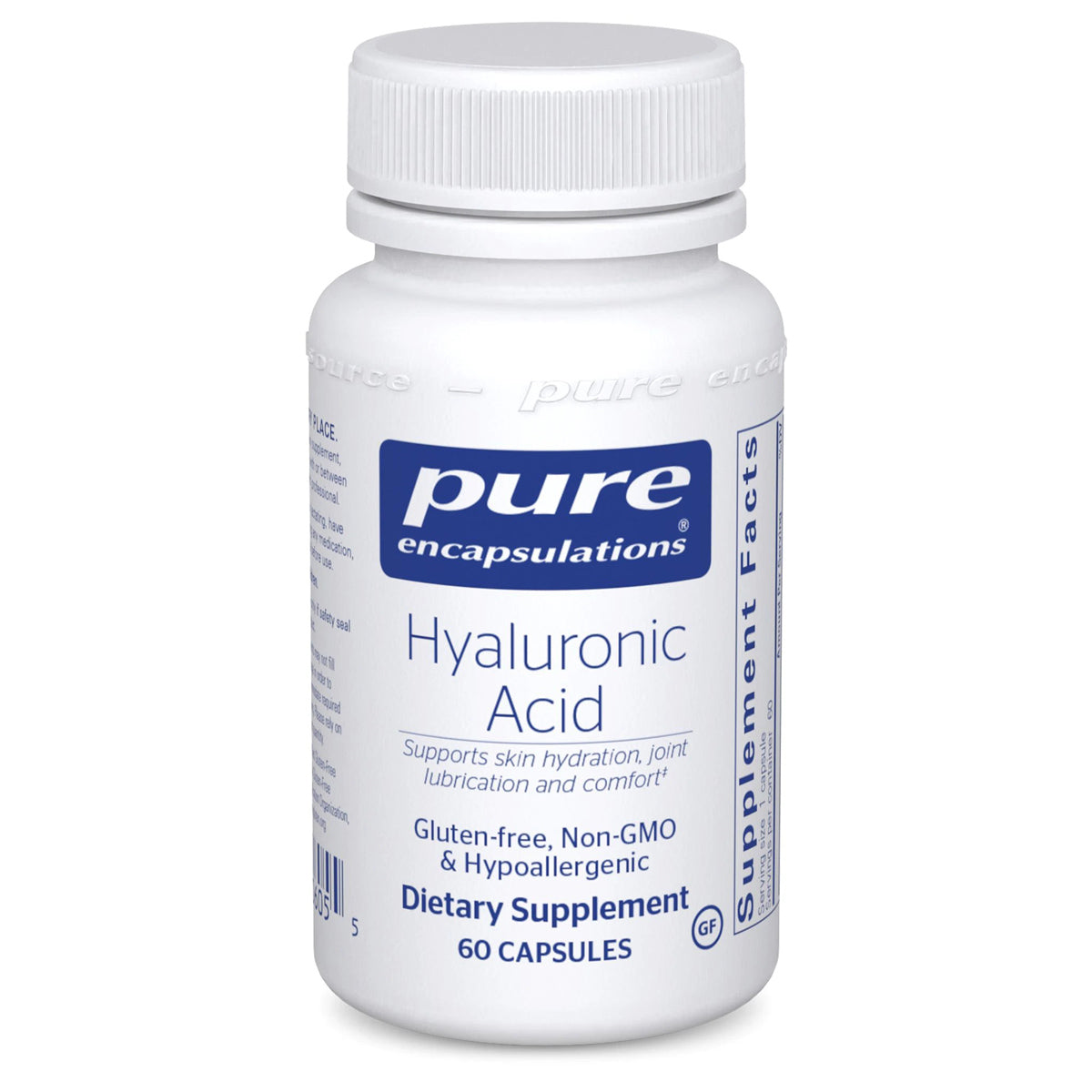
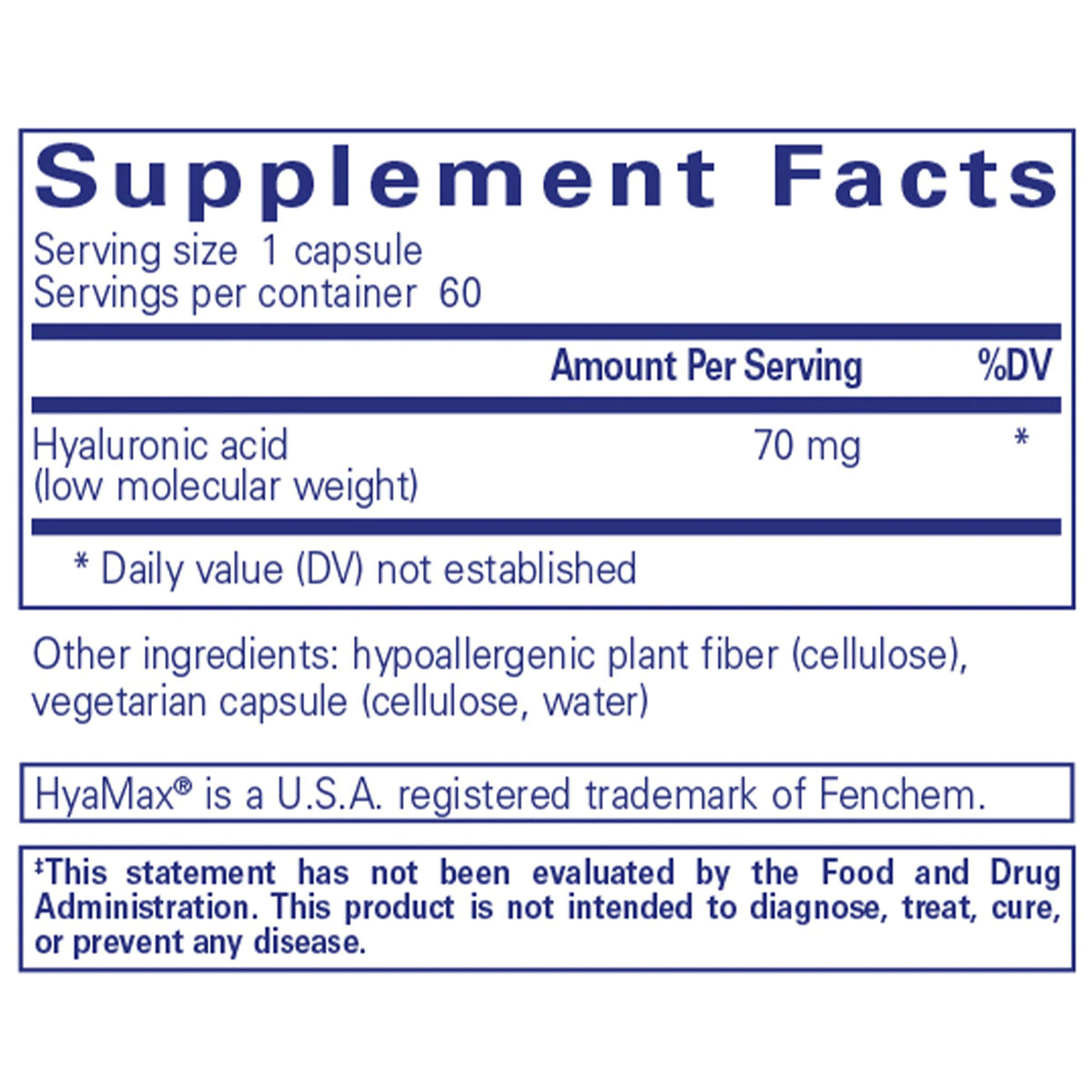
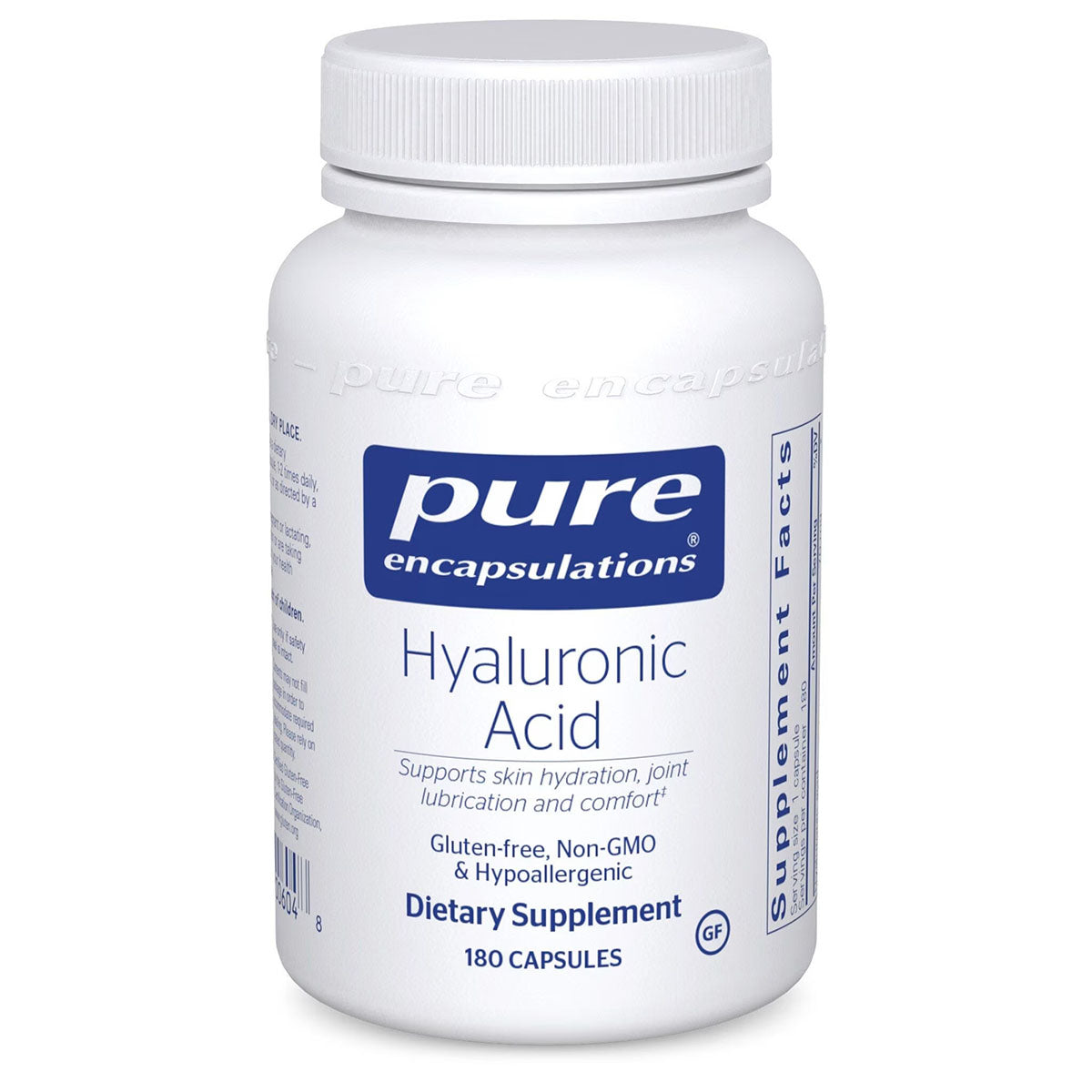
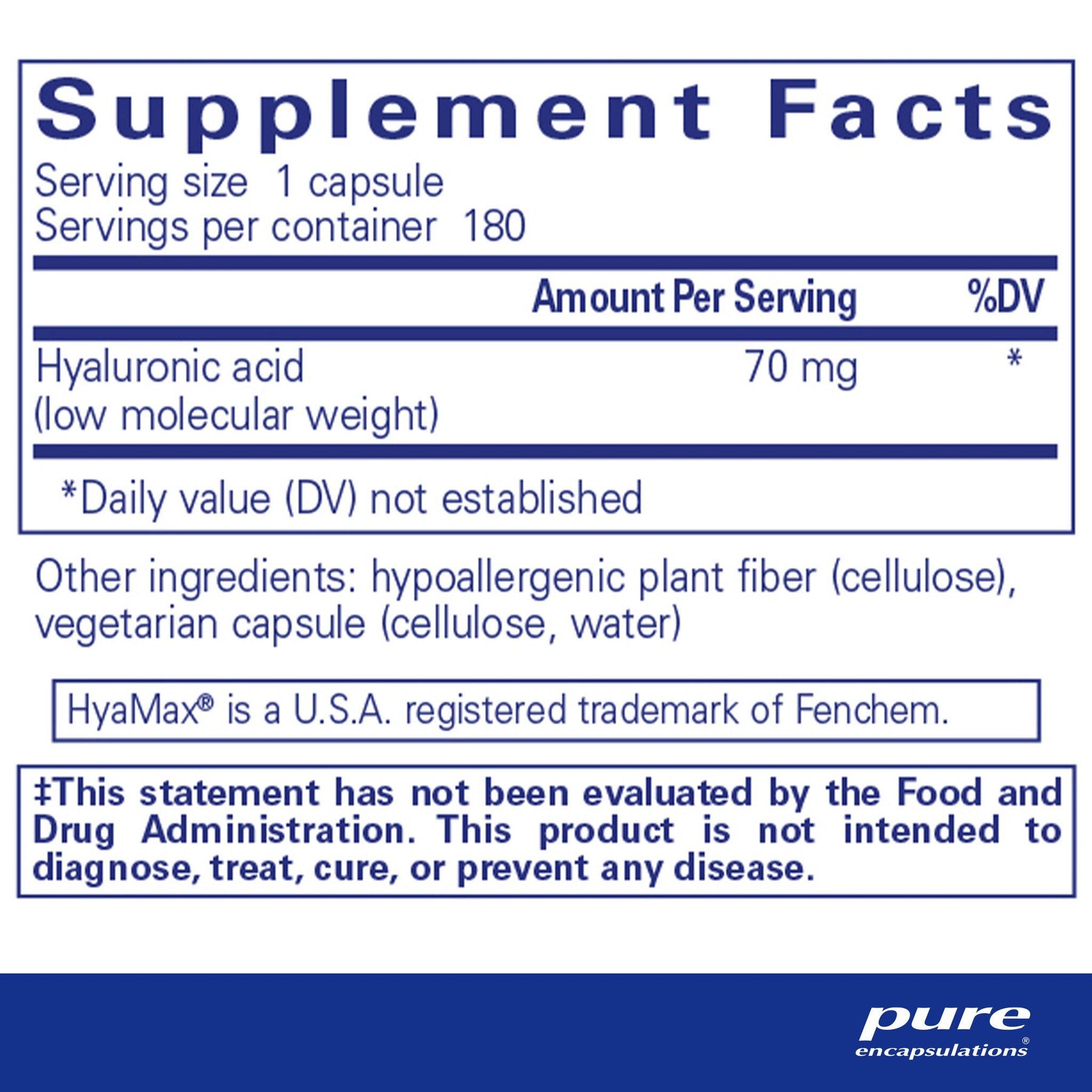
Hyaluronic Acid - Skin and Joint Support
Rated 4.7 out of 5 stars
10 Reviews
Capsule Count:60 Capsules
Quantity:
Hyaluronic acid (HA) is a naturally occurring polymer found in every tissue of the body. It is particularly concentrated in the skin and in synovial fluid but decreases with aging. Many sources of HA consist of large molecular weight compounds that are too large to be absorbed in the intestines. HyaMax® sodium hyaluronate provides a low molecular weight source of hyaluronic acid produced through fermentation.1 In a pharmacokinetic study conducted in animals, orally administered HyaMax® hyaluronic acid was incorporated into joints, connective tissue and skin, with a particular affinity for cartilaginous joints.2 HA functions include attracting and retaining water in the extracellular matrix of tissues.3 For skin cells, this is essential for proper cell-to-cell communication, hydration, nutrient delivery, and waste and toxin elimination.4 HA also supports the skin by promoting healthy turnover and renewal of keratinocytes.5 For joints, HA is especially supportive of healthy lubrication and shock absorption.6 In vitro studies indicate that HA modulates prostaglandin production, which may contribute to its support for healthy joint function.7‡
Benefits
- Promotes joint function, including healthy lubrication and shock absorption‡
- Supports skin health by promoting healthy turnover and renewal of keratinocytes‡
- Helps attract and retain water in the extracellular matrix of tissues to promote skin function and health‡
- HyaMax® sodium hyaluronate provides a low molecular weight source of hyaluronic acid produced through fermentation
- Made with high-quality vegan ingredients backed by verifiable science
References
- Volpi N, et al. Curr Med Chem.2009;16(14):1718-45.
- Balogh L, et al. J Agric Food Chem. 2008 Nov 26;56(22):10582-93.
- Kajimoto O, et al. J of New Remedies and Clinics.2001. 50(5); 90-102.
- Park JU, et al. Tissue Eng. 2002 Jul;8(3):419-27.
- Meyer LJ, et al. J Invest Dermatol. 1994 Mar;102(3):385-9.
- Tashiro T, et al. Scientific World Journal. 2012; 2012: 167928.
- Engstrˆm-Laurent A, et al. Ann Rheum Dis.1985 Feb;44(2):83-8.
